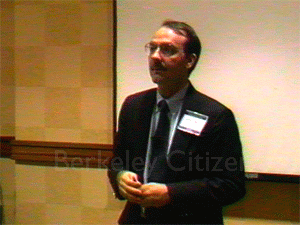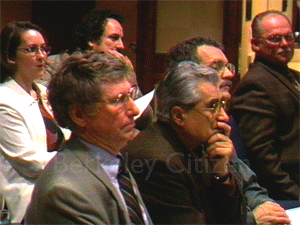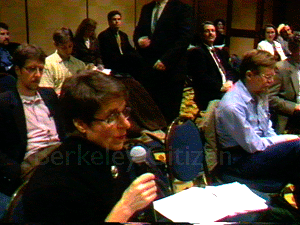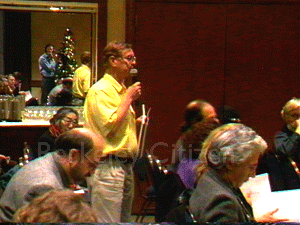
Department of Energy Long-Term Stewardship and the Lawrence Berkeley National Lab
Department of Energy’s Long-Term Stewardship Study
Public Scoping Meeting - San Francisco CA - December 14, 2000"DOE held a public workshop on December 14, 2000 to allow additional information exchange and discussion with the public. Discussions and comments received were recorded by note-takers. Although the discussions were not included as formal public comments, these discussions were considered by DOE in developing the Final Study."
The following is an excerpt from a presentation by James D. Werner, Program Director, Office of Long-Term Stewardship. This first half of the recording includes two comments at the end by Berkeley residents Pamela Sihvola and L A Wood regarding the lack of an honest, inclusive public process at DOE's Lawrence Berkeley National Laboratory. They also made public the lab's insistence that our Berkeley community pay $42,000 up front for access to DOE's and LBNL's environmental documents.
As DOE’s Berkeley history has shown, from the early 1990s RCRA "investigations" into LBNL's "Accelerated Cleanup”, there has only been a token effort made by the Lab to protect this public land. In fact, at the time of this scoping meeting in 2000, LBNL was well down the path to declaring their site a “brownfield”, or in California terms, a “Containment Zone”. With this declaration Lawrence Berkeley Laboratory had, in a regulatory sense, opted out of any further cleanup or requirements to fully characterize their hillside laboratory. This is the legacy of DOE’s “stewardship” that the federal agency has left Berkeley.
Produced by Berkeley Citizen
All labor donatedALSO VIEW
Resource Conservation and Recovery Act RCRA -Public Workshop & Hearing LBNL "Sitewide CleanupVideo
Lab’s ’Stealth’ Emissions Hurt Environment: Independent review needed
L A Wood, The Daily Californian, June 23, 2000
Long-Term Stewardship Study Final Report 10-2001
All Rights Reserved





